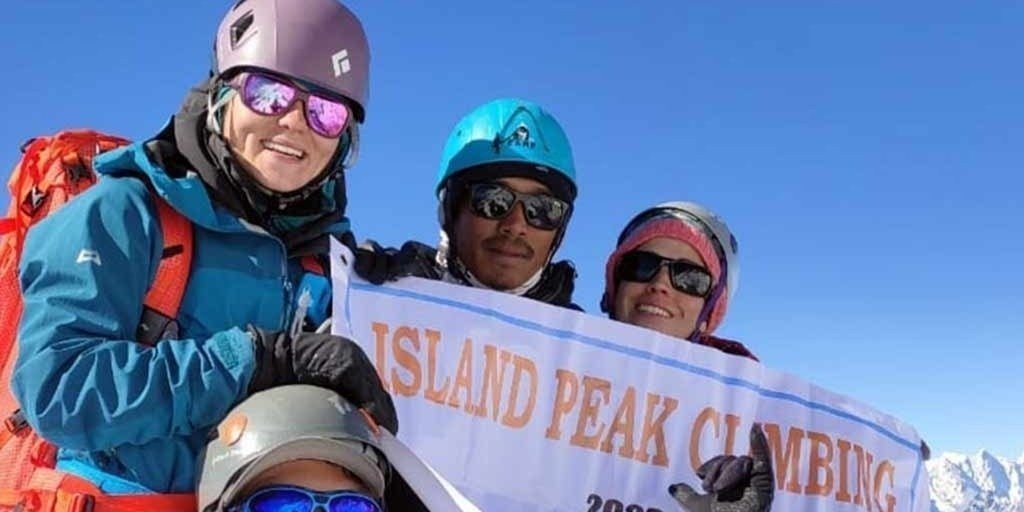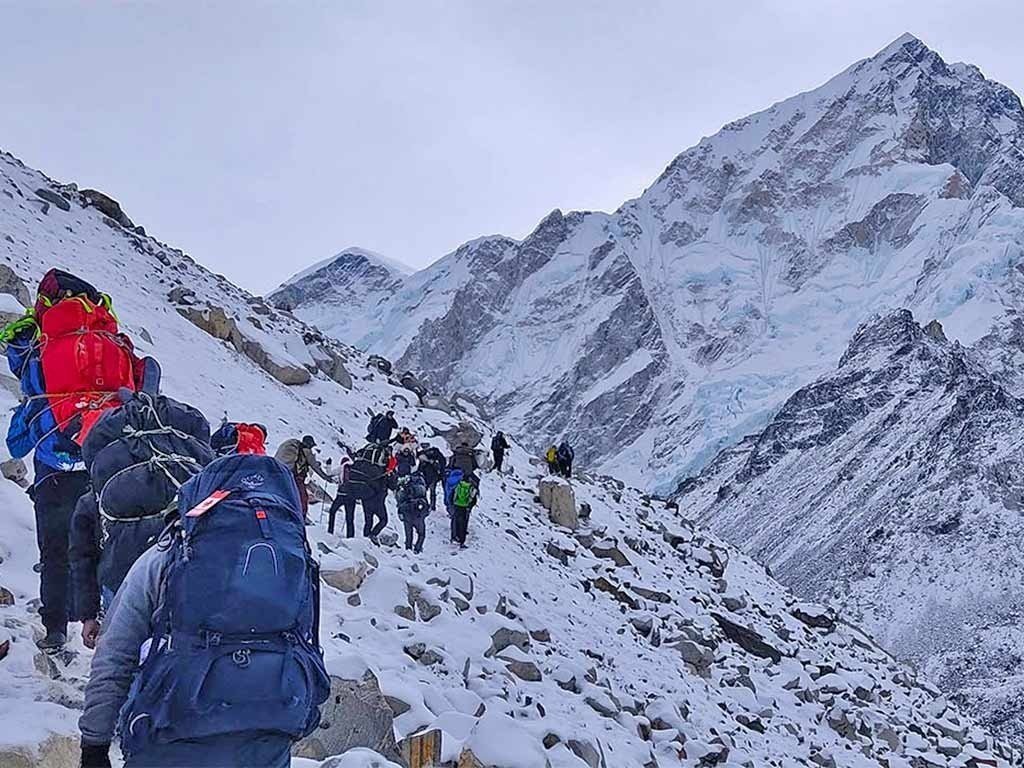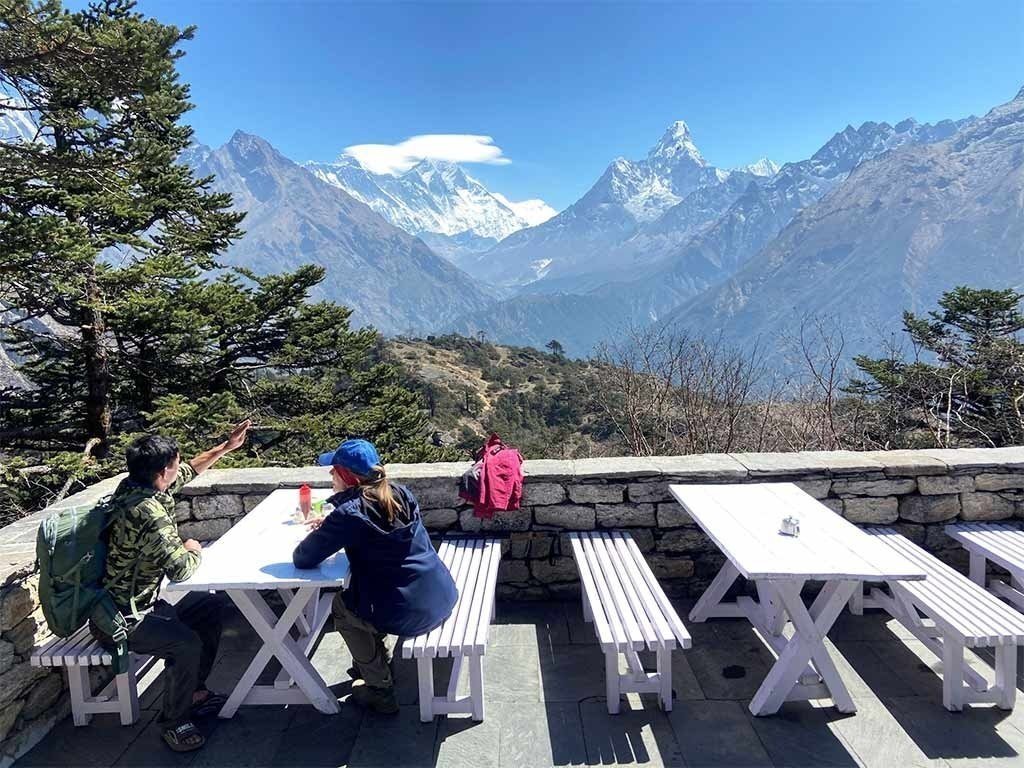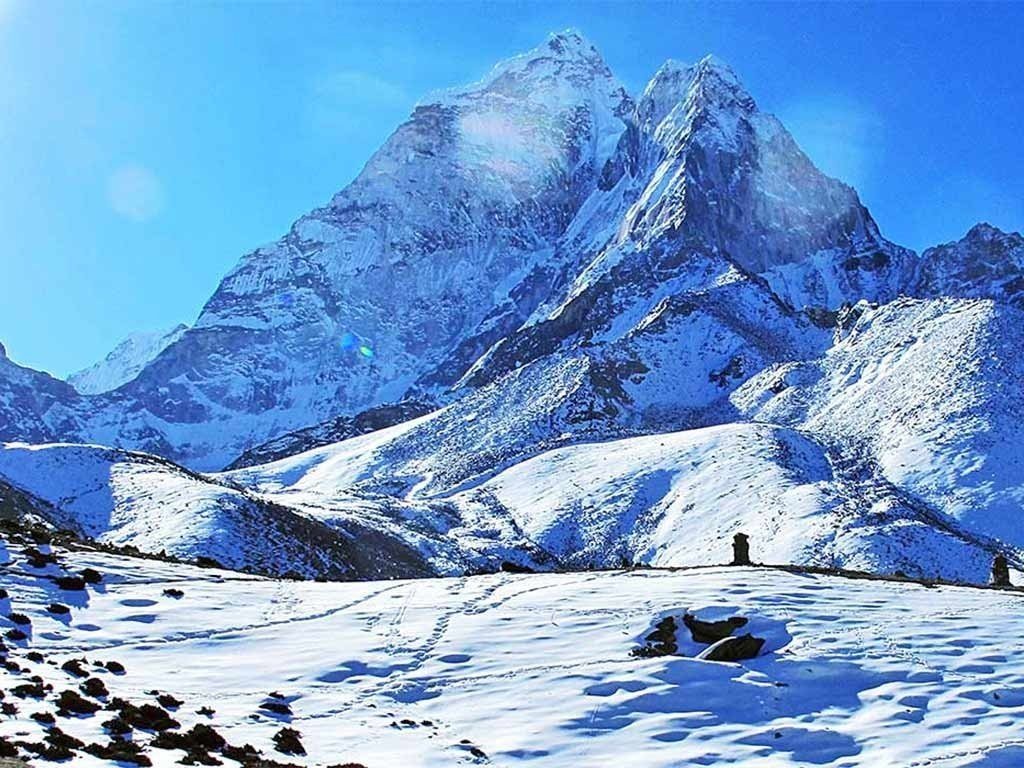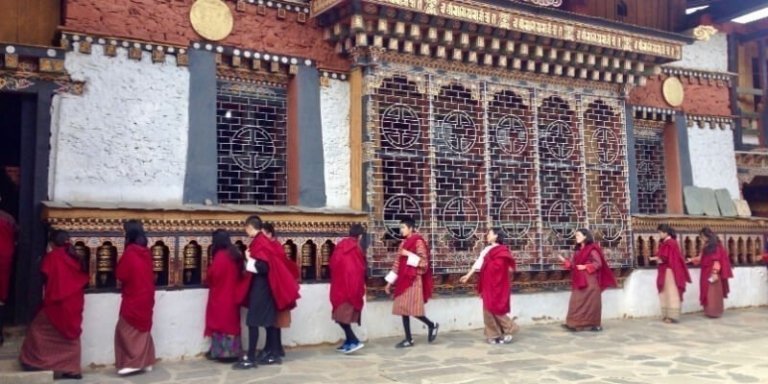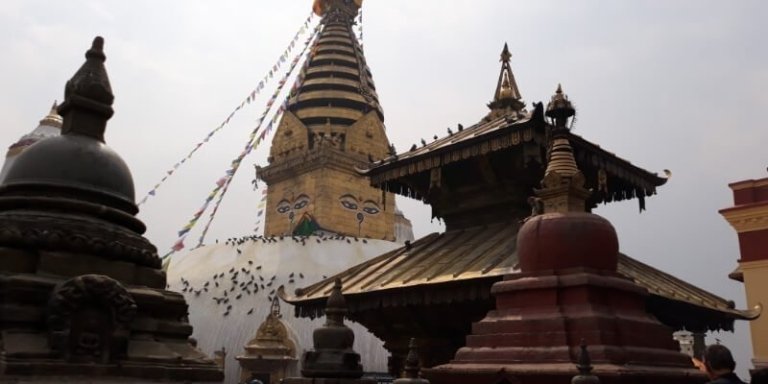Everest Base Camp Trek is more than an ordinary trek. Throughout a trail better described as iconic steps towards paradise offers blend of Sherpa culture, alpine forests and more than 20 mountain Read more ➤
Short Island Peak from Chukung
-
Duration - 4 days
-
Guide optionsEnglish
-
Cancellation PolicyStandard
Overview
Island Peak, also known as Imja Tse, stands at 6,189 meters in Nepal's Everest region. It’s a popular climbing destination for trekkers seeking a Himalayan adventure. The peak offers a moderately challenging ascent, requiring basic mountaineering skills like using crampons, ropes.
Highlights
- Trip Hightlight
- Climb Island Peak 6,189 m, is one of the most popular trekking peaks in Nepal.
- Visit the cultural, historical, and cultural wonders of Nepal.
- It is the best combination of Himalayan trekking and climbing.
- An easy ascent up a 6,000-meter peak for first-time climbers.
- Experience Sherpa culture and Himalayan views of 7,000 and 8,000-meter peaks
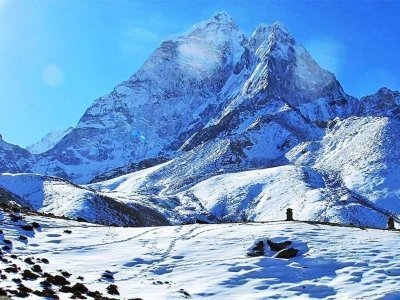
Description
Short Island Peak from Chukung
Island Peak, also known as Imja Tse, is a well-known hiking peak in Nepal's Everest area. It has an elevation of 6,189 meters (20,305 feet) and is popular with hikers and climbers. Chukung is a tiny settlement in the Everest area that serves as the beginning point for several treks, including the Island Peak climb. Trekkers and climbers often ascend from Chukung to Island Peak Base Camp, located at the mountain's base. Technical aspects of the climb include steep slopes and fixed ropes. Prior expertise with climbing equipment such as crampons, ice axes, and ropes is typically required, and some climbers choose to employ local guides or join guided trips. The climb is difficult but rewarding, with breathtaking vistas of the neighboring Himalayan peaks such as Lhotse, Nuptse, and Everest. The path from Chukung to Island Mountain combines hiking and climbing and is ideal for experienced trekkers or those looking to tackle a fairly difficult mountain in the Everest area.
Planning:
Complete planning is required when preparing for a hike to Island Peak from Chukung. Begin by studying the trekking route and any permissions required. Hiring a local guide or joining a guided trip is strongly advised because solo travel is prohibited in Nepal for safety concerns. You may get a guide from genuine travel firms in Nepal, which will also assist you in organizing your trip. Permits and TIMS are required.
Acclimatization should be prioritized with strategically scheduled rest days at higher elevations, but emergency protocols and evacuation routes should be understood. Select the optimum trekking season and maintain physical fitness with targeted training that takes into account both cardiovascular endurance and strength. Trekking equipment is required, so you may either buy or rent basic climbing gear and clothes for varied weather situations.
Perform medical tests, obtain enough travel insurance, and trek responsibly by adhering to environmental standards. Finally, have emergency communication equipment on hand to ensure a safer excursion to Island Peak.
The best time to do the Island Peak from Chukung:
Spring (March to May) and fall (September to November) are typically regarded as the best seasons for starting a journey to Island Peak in the Everest area. Spring welcomes travelers with pleasant temperatures, beautiful sky, and blossoming wildflowers along the trails, making for an aesthetically pleasing excursion. Because of the high visibility and lesser precipitation, this is a perfect season for trekking and ascending Island Peak due to the calm weather. Autumn is also a good time to travel, with bright skies and calm weather following the monsoon season. The routes are less congested, giving a more tranquil hiking experience while still affording beautiful vistas of the surrounding mountains.
Seasons such as monsoon (June to August) and winter (December to February) are not recommended since heavy rains make routes muddy, slippery, and prone to landslides, creating safety issues and making navigation difficult owing to limited visibility. Winter months, on the other hand, bring intense cold, significant snowfall, and difficult weather conditions, particularly at higher elevations.
Foods and Accommodations:
Accommodations on the trek to Island Peak are mostly teahouses or lodges located in settlements along the way. These hotel alternatives include minimal but useful facilities, such as twin-bed rooms and communal restrooms, frequently equipped with squat toilets. Dining and socializing take place in common areas. Due to inadequate infrastructure, camping becomes increasingly common for hikers closer to Island Peak Base Camp.
Teahouse meals often feature traditional Nepalese cuisines such as dal bhat (rice and lentil soup), noodles, rice, and veggies, as well as Western-style alternatives and hot drinks. Packed lunches consisting of sandwiches, boiled eggs, fruits, and energy bars are typically served for lunch. Personal snacks, such as trail mix or energy bars, are advised to complement meals due to the isolated and high-altitude environment, where food variety may be restricted. Being adaptive and grateful for the basic amenities helps you embrace the unique hiking experience in this region.
It is always advised to consult with your guide for better and healthier food options.
Transportation:
Because there is no direct flight from Kathmandu to Lukla, visitors must drive for four hours (by shared Hiace Van) from Kathmandu to Manthali Airport. This is because of high traffic at Kathmandu's international airport (October-November and March-April). Then we'll fly directly from Rameechap Manthali Airport to Lukla Airport). If you wish to go by private vehicle, you must pay an extra fee of USD 100. In terms of flight time, passengers should check out about 1 a.m. for a same-day departure. If you want to stay one night in Rameechap for the same-day flight, you will be charged a hotel fee of around USD 20 per person.
Note: If you are flying during the off-season (January-February or May-September), you may take a direct flight to Lukla from Kathmandu's Tribhuvan International Airport.
Our tour will conclude in Lukla, where we will fly back to Rameechap Manthali Airport and take a shared Hiace vehicle to Kathmandu the following day.
(Again, private vehicles are an additional fee and are not included in this package.)
Necessary Permits & TIMS:
To visit the territory, Island Peak from Chukung requires three sorts of permits. A Trekker's Information Management System (TIMS) Card is no longer required. These permissions can only be obtained from licensed agencies, and no freelancing guide can give them.
1. Khumbu Pasang Lhamu Rural Municipality Entrance Permit:
This permit is intended to supervise and handle tourism activity in the Khumbu region. It is necessary across the Khumbu region, including Namche Bazaar, Tengboche, Dingboche, and Gorakshep, and is valid till Jiri.
Cost: NPR 3000 Per Person for each foreigner.
2. Sagarmatha National Park Entry Permit:
The purpose of this permit is to restrict and manage entry to the Sagarmatha National Park to preserve its natural beauty and biodiversity. The cash collected by these permits is utilized to conserve and maintain the park.
Cost: NPR 3000 Per Person for each Foreigner
3. Additional Permit for Jiri to Everest Base Camp Trek:
While entering Jiri, an extra permit for the Gaurishankar Conservation Area is required till we reach the Everest Base Camp Trek.
Cost: NPR 3000 Per Person for each foreigner.
4. Climbing permit:
A climbing permit is a legal authorization or license issued by a relevant body or organization to individuals or groups that authorizes them to climb a certain mountain, or designated climbing area. These climbing permits differ according to the region and the governmental agency in charge of the area.
Cost: Island Peak Climbing permits are priced differently depending on the season. For the months of March, April, and May, the cost is USD $250 due to the ideal conditions of clear and mild weather. On the other hand, during September, October, and November, the permit fee is USD $125 for the autumn season, which is a popular time for Island Peak Climbing. The permit price decreases during the winter and summer months, which are considered off-seasons. Additionally, for December, January, and February, the permit fee is USD $70.
What's included
- Inclusions:
- Island Peak Climbing Permit.
- One climbing guide (Sherpa) among two members.
- All standard Meals (Breakfast , Lunch and Dinner) during the time climb.
- Included Garbage disposal charge.
- Accommodation in lodge during the trek and basic camping arrangement during climbing.
- A porter for every two passengers (please make your bag 15 kg and around).
- Insurance for every staff.
- Island Peak Climbing Map.
- Emergency Helicopter rescue arrangement if in case ((pay by your travel insurance) in the worst case
- Sleeping, bag down jackets if you do not have your own, to be returned after the trip.
- First Aid Box carried by the porter.
- Medical supplies, first aid kit box, including Oximeter and pulse meter checker.
- All other government taxes and expenses
- Exclusions:
- Personal clothing, gear and climbing equipment.
- Personal accident insurance, emergency evacuation cost, oxygen, medical box.
- Alcoholic beverage, laundry and tips.
- Extra night Hotel accommodation and sightseeing tour in Kathmandu (available as per your choice)
Itinerary
- Visited Places:
- Kathmandu
- Imja Tse
- Tenzing-Hillary Airport
Day 01: Trek to Island Peak base camp (5087m) (Camping)
Day 02: Climbing Clinic Course / Rest in Base camp
Day 03: Summit the Island peak (6189m) and trek back to base camp
Day 04: Trip ends after breakfast / Departure
Frequently Asked Questions
How much time does the Short Island Peak from Chukung take?
Short Island Peak from Chukung duration is 4 days.
Book Short Island Peak from Chukung now just with Booking Deposit on TripsPointHow many days in advance I must book Short Island Peak from Chukung?
You can book Short Island Peak from Chukung at least in 5 days. Check availability calendar in "Book Now" form to see currently available dates.
Book Short Island Peak from Chukung now just with Booking Deposit on TripsPointtraveler reviews
You may also like
With the Buddha Birthplace & Jungle Safari - 10 Day Pilgrimage Tour in Nepal we visit the most sought after sacred sites in Nepal. Daily introductory sessions to Buddhist Philosophy and meditation. Read more ➤
We will immerse ourselves in the serene nature, as well as visiting sacred sites where yogis have meditated for decades and where Buddhist monasteries and prayer flags characterize the surroundings. Read more ➤
In 7 days of Nepal Wildlife & World Heritage Sites Tour you marvel at the world heritage sites of Kathmandu valley and enjoy jungle safari in the steamy jungles of Chitwan National Park. In this tour Read more ➤
Kathmandu Chitwan Pokhara Tour Package is all in one trip is a very rewarding trip designed for people of all ages. Explore heritage sites, watch the ethereal light show of sunrise over Annapurna Read more ➤
